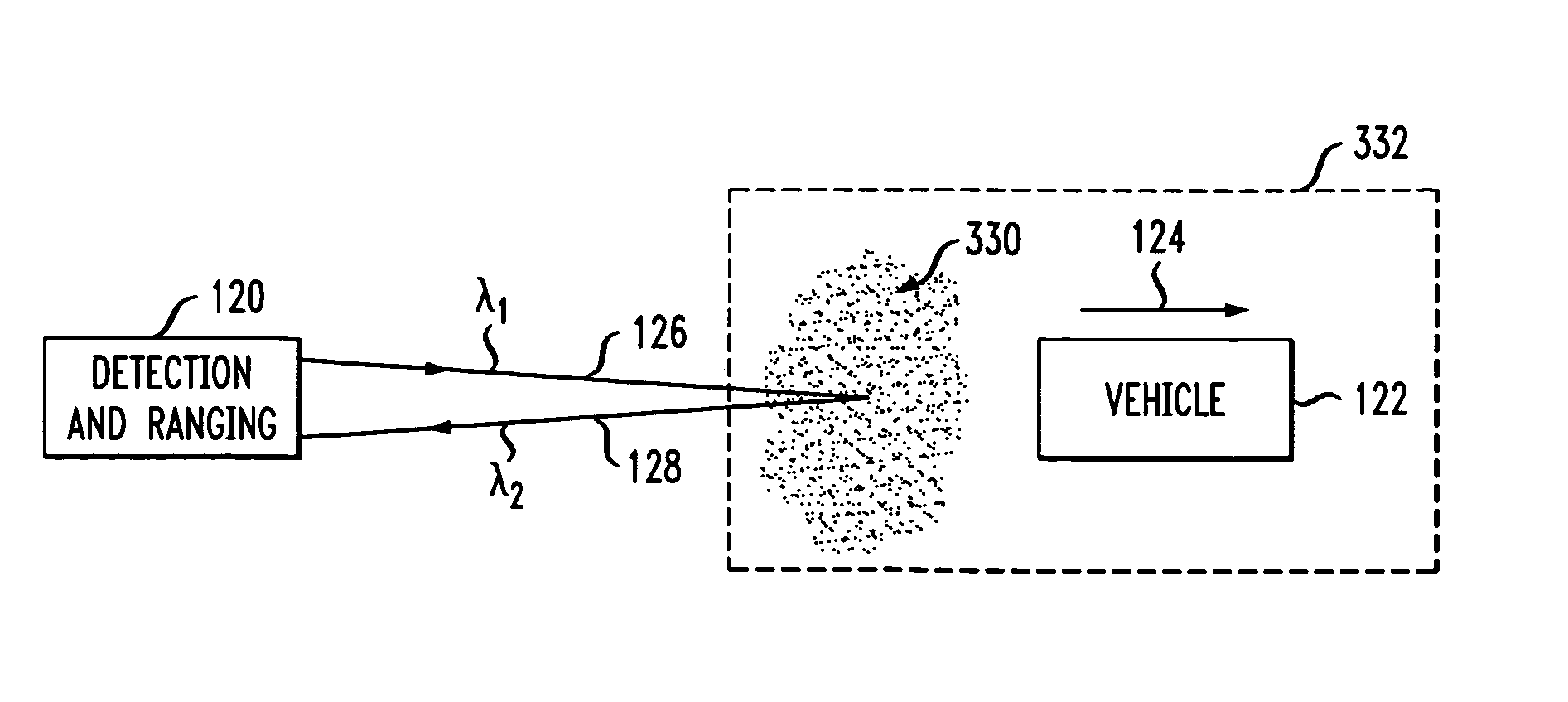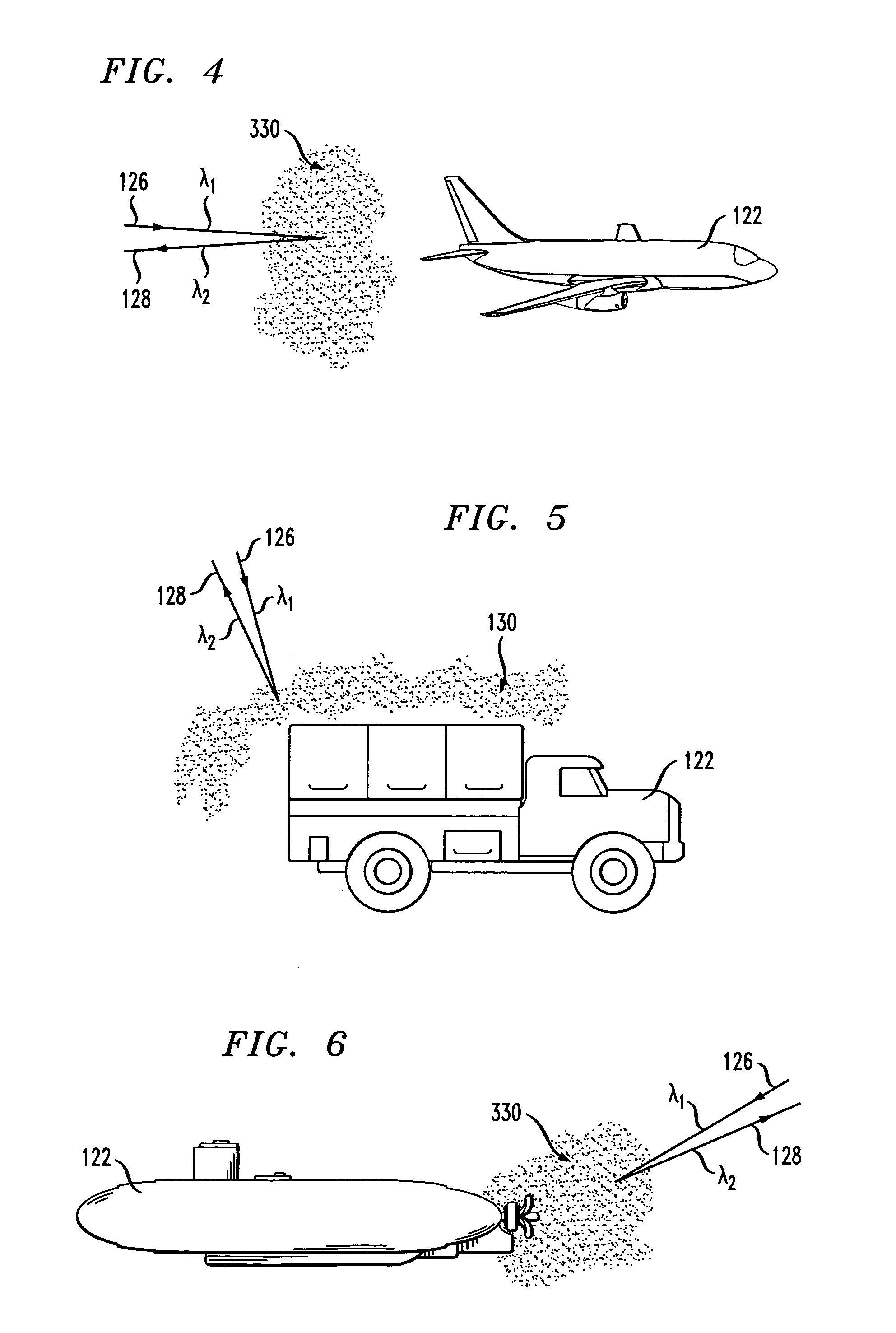Method for using very small particles as obscurants and taggants
a technology of obscurants and tags, applied in the field of obscurants or marking objects, can solve the problems of obscurants for lidar or laser-designation systems that are typically limited to classical systems, and smoke is generally not available for use as obscurants for submarines
- Summary
- Abstract
- Description
- Claims
- Application Information
AI Technical Summary
Benefits of technology
Problems solved by technology
Method used
Image
Examples
Embodiment Construction
[0033]The terms listed below are defined for use in this specification as follows:
[0034]Laser-based Detection and Ranging (LDR) Systems. As used herein, this phrase generically refers to both LIDAR systems and laser designation systems. That is, the illustrative embodiments of the invention can be used, as appropriate, in conjunction with either type of system. LIDAR and laser designation systems are well known to those skilled in the art and will not be described here in detail. It will suffice to note that LIDAR is capable of generating a beam of laser light having a specific wavelength, directing the beam toward a target, detecting a beam having the same wavelength that is reflected from the target, and ranging the target. Laser designation systems “illuminate” a target for a missile to home on. For clarity and simplicity, the illustrative embodiment of the present invention is described and illustrated in the context of LIDAR systems. Those skilled in the art will know how, and ...
PUM
 Login to View More
Login to View More Abstract
Description
Claims
Application Information
 Login to View More
Login to View More - R&D
- Intellectual Property
- Life Sciences
- Materials
- Tech Scout
- Unparalleled Data Quality
- Higher Quality Content
- 60% Fewer Hallucinations
Browse by: Latest US Patents, China's latest patents, Technical Efficacy Thesaurus, Application Domain, Technology Topic, Popular Technical Reports.
© 2025 PatSnap. All rights reserved.Legal|Privacy policy|Modern Slavery Act Transparency Statement|Sitemap|About US| Contact US: help@patsnap.com



